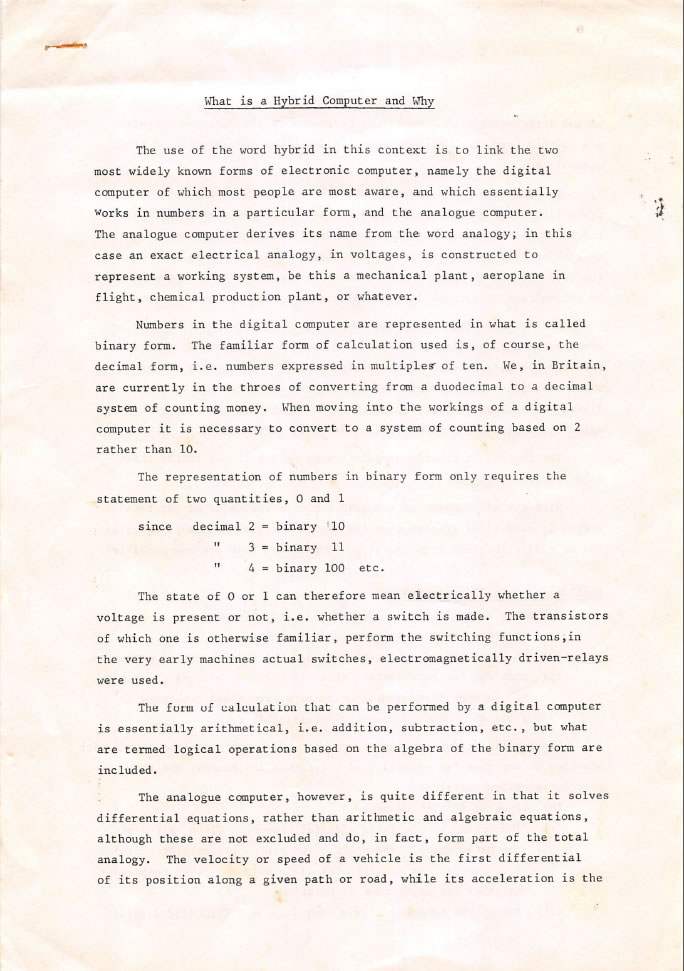|
The use of the word hybrid in this context is to link the two most widely known forms of electronic computer, namely the digital computer of which most people are most aware, and which essentially works in numbers in a particular form, and the analogue computer.
The analogue computer derives its name from the word analogy; in this case an exact electrical analogy, in voltages, is constructed to represent a working system, be this a mechanical plant, aeroplane in flight, chemical production plant, or whatever.
Numbers in the digital computer are represented in what is called binary form. The familiar form of calculation used is, of course, the decimal form, i.e. numbers expressed in multiples of ten. We, in Britain, are currently in the throes of converting from a duodecimal to a decimal system of counting money. When moving into the workings of a digital computer it is necessary to convert to a system of counting based on 2 rather than 10.
The representation of numbers in binary form only requires the statement of two quantities, 0 and 1 since
decimal 2 = binary 10
decimal 3 = binary 11
decimal 4 = binary 100 etc.
The state of 0 or 1 can therefore mean electrically whether a voltage is present or not, i.e. whether a switch is made. The transistors of which one is otherwise familiar, perform the switching functions, in the very early machines actual switches, electromagnetically driven-relays were used.
The form of calculation that can be performed by a digital computer is essentially arithmetical, i.e. addition, subtraction, etc., but what are termed logical operations based on the algebra of the binary form are included.
The analogue computer, however, is quite different in that it solves differential equations, rather than arithmetic and algebraic equations, although these are not excluded and do, in fact, form part of the total analogy. The velocity or speed of a vehicle is the first differential of its position along a given path or road, while its acceleration is the second differential. The equations presented to the analogue computer are in this form, i.e. displacement, velocity and acceleration or their equivalents.
Date : Unknown
Format : Digital PDF
This exhibit has a reference ID of CH32279. Please quote this reference ID in any communication with the Centre for Computing History.
|
|


This document has been scanned and is available to view online.
Please note that copyright is retained by the original rights holder.
File Size: 2.09 MB
|






